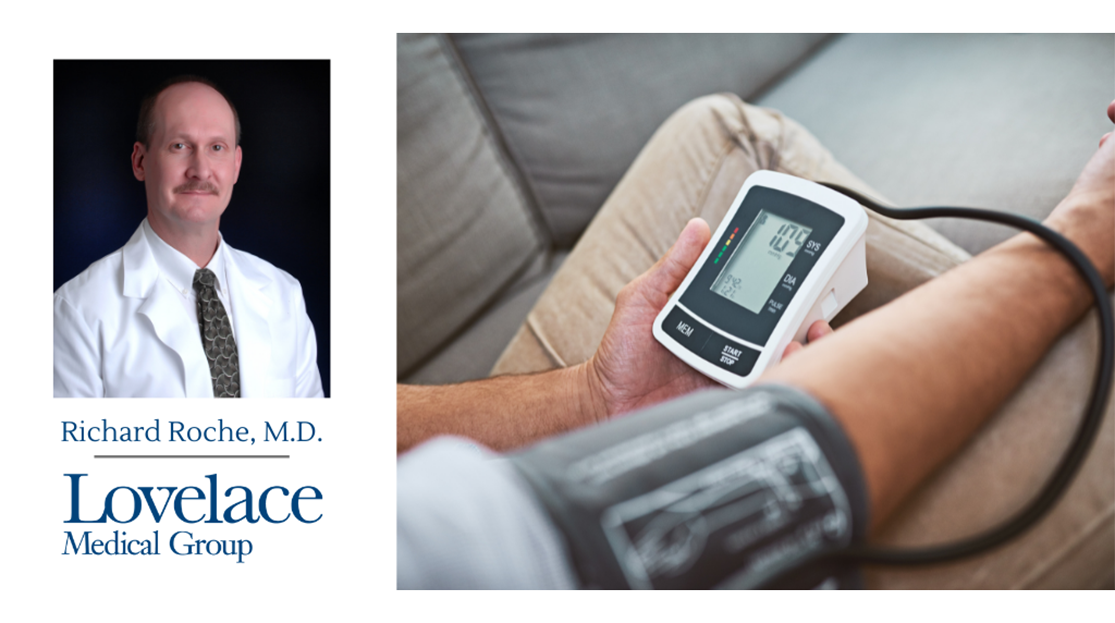Hypertension, also known as high blood pressure, is very common among adults. Despite how many people have high blood pressure, many are unaware they even have it because it’s often experienced without any symptoms at all, only identified only through a blood pressure reading. And while blood pressure readings can be conveniently measured at home, many adults are unfamiliar with what to look for and how to translate the results.
We spoke with Lovelace Medical Group primary care physician, Richard Roche, M.D., to get some answers to our questions about hypertension, blood pressure readings, what’s normal and what’s considered a concerning reading.
Hypertension occurs when the force of blood flow in your arteries is rapid enough that, over time, friction creates a risky environment that may result in heart disease. When you receive your reading, you’ll see two different numbers, separated by a forward slash. The first number is known as the systolic pressure reading, which gives you the amount of pressure in your arteries when your heart beats. The second number, the diastolic pressure, measures the pressure in your arteries between heartbeats.
“A normal blood pressure reading is anything less than 120/80,” Dr. Roche said. “A diagnosis of hypertension is based on an average blood pressure reading of more than, or exactly, 130/80 on two or more measurements, or a single blood pressure reading higher than 180/110. This should be confirmed by home blood pressure measurements. The American College of Cardiology and American Heart Association recommends a target systolic blood pressure goal of less than 130-140 for community-dwelling patients over 65. Conversely, the American Academy of Family Physicians suggests a target systolic blood pressure of less than 150 in this age group, which I think is too high a goal.”
While the threshold to diagnosis hypertension is well defined, the circumstances that should raise concern aren’t as black and white.
“Hypertensive urgency is defined by a blood pressure reading greater than or equal to 180/110,” Dr. Roche said. “Any elevated blood pressure greater than 140/90 with symptoms such as chest pain, shortness of breath, vision changes, headache, etc., should be evaluated.”
Aside from the diagnosis of hypertension itself, there are many health concerns related to the condition.
“Approximately 50% of strokes and heart disease worldwide, like heart failure and heart attacks, are attributable to hypertension,” Dr. Roche said. “Controlling blood pressure reduces the risk of heart attack by 25-30%.”
If you’re experiencing symptoms of hypertension, or need guidance understanding your blood pressure reading results, call 505.727.2727 to schedule an appointment with a PCP.

